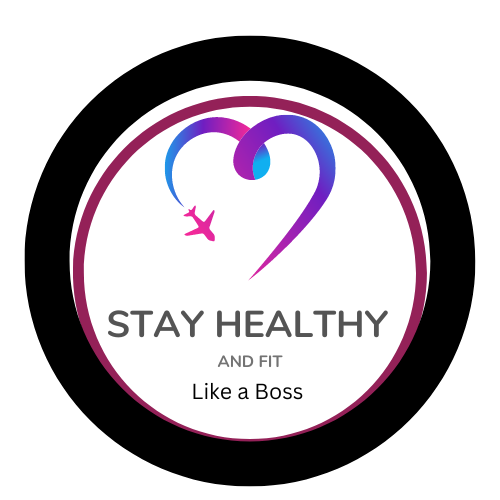 |
| Health Harmony blog |
Keto Diet Tips for Beginners
Introduction
Starting a new diet can be intimidating, but the keto diet has become increasingly popular for its potential health benefits and weight loss effects. If you're considering jumping on the keto bandwagon, you're in the right place! In this guide, we'll cover everything you need to know about starting a keto diet, from understanding the basics to tips for staying motivated.
Understanding the Basics of the Keto Diet
What is the Keto Diet?
The ketogenic diet, commonly known as the keto diet, is a high-fat, low-carbohydrate eating plan. The primary goal is to shift your body's metabolism from burning carbohydrates to burning fats, leading to a state known as ketosis.
How the Keto Diet Works
When you drastically reduce your carbohydrate intake and replace it with fats, your body enters a metabolic state called ketosis. In ketosis, your body becomes incredibly efficient at burning fat for energy. Additionally, fats are turned into ketones in the liver, which can supply energy for the brain.
Macronutrient Breakdown
The keto diet typically consists of:
70-75% fats
20-25% protein
5-10% carbohydrates
Getting Started with the Keto Diet
Setting Realistic Goals
Before diving into the keto diet, set achievable goals. Whether you aim to lose weight, improve your energy levels, or manage a health condition, having clear objectives will help keep you on track.
Essential Kitchen Tools
Invest in some basic kitchen tools to make meal prep easier:
Food scale for accurate portion sizes
Measuring cups and spoons for tracking ingredients
Non-stick pans for cooking without excess oil
Planning Your Keto Meals
Importance of Meal Planning
Planning your meals is crucial on the keto diet to ensure you stay within your carb limits. It also helps prevent last-minute unhealthy food choices.
Sample Keto Meal Plan
Here's a simple meal plan to get you started:
Breakfast: Scrambled eggs with avocado
Lunch: Grilled chicken salad with olive oil dressing
Dinner: Baked salmon with steamed broccoli
Snacks: Nuts, cheese, or celery with peanut butter
Choosing the Right Foods
Keto-Friendly Foods
Focus on these foods to keep your carb intake low:
Meat and poultry
Fish and seafood
Eggs
Low-carb vegetables (leafy greens, broccoli, cauliflower)
Nuts and seeds
Healthy fats (avocado, olive oil, coconut oil)
Foods to Avoid
Steer clear of high-carb foods such as:
Sugary foods (cakes, candies, sodas)
Grains and starches (bread, pasta, rice)
Fruit (most fruits except berries)
Beans and legumes
Common Mistakes to Avoid
Not Tracking Carbs
It's easy to underestimate your carb intake. Use a food diary or an app to track everything you eat.
Ignoring Hidden Sugars
Check labels for hidden sugars in processed foods. Ingredients like high fructose corn syrup and maltodextrin can quickly add up.
Keto-Friendly Snacks and Beverages
Snack Options
Keep these keto-friendly snacks on hand:
Cheese sticks
Hard-boiled eggs
Olives
Nuts
Keto-Approved Drinks
Stay hydrated with these options:
Water
Herbal tea
Black coffee
Electrolyte drinks
Managing Keto Flu
What is Keto Flu?
Keto flu is a common set of symptoms that can occur when starting the keto diet, including headaches, fatigue, and irritability.
Tips to Combat Keto Flu
Stay hydrated
Increase your salt intake
Get plenty of rest
Exercise and the Keto Diet
Best Exercises for Keto
Combine the keto diet with these exercises for best results:
Walking or jogging
Weight lifting
High-Intensity Interval Training (HIIT)
Benefits of Exercise on Keto
Exercise helps improve insulin sensitivity, enhances fat loss, and boosts overall health.
Monitoring Your Progress
Tracking Your Macros
Use apps or food journals to monitor your macronutrient intake. This will help ensure you're meeting your keto targets.
Adjusting Your Diet
If you're not seeing results, tweak your fat, protein, and carb ratios. Sometimes small adjustments can make a big difference.
Eating Out on Keto
Tips for Dining Out
When eating out, stick to these tips:
Choose grilled over fried
Ask for sauces and dressings on the side
Opt for vegetable sides instead of starchy options
What to Order at Restaurants
Some keto-friendly choices include:
Grilled meats or fish
Salads with olive oil dressing
Bunless burgers
Supplements to Consider
Electrolyte Supplements
These can help maintain electrolyte balance and prevent dehydration.
MCT Oil and More
Medium-chain triglycerides (MCT) oil can provide an extra energy boost and enhance ketone production.
Staying Motivated
Setting Short-Term Goals
Set smaller, achievable goals to keep yourself motivated. Celebrate your successes along the way.
Joining a Keto Community
Find support and motivation by joining online keto communities or local groups.
Overcoming Plateaus
Why Plateaus Happen?
Plateaus can occur due to metabolic adaptation. Your body may adjust to the lower calorie intake, slowing down progress.
Strategies to Break Plateaus
Reevaluate your calorie intake
Incorporate intermittent fasting
Increase physical activity
Conclusion
Starting the keto diet can be a rewarding journey towards better health and weight management. Remember to set realistic goals, plan your meals, and stay motivated. The keto lifestyle is a marathon, not a sprint, so be patient and enjoy the process.
FAQs
What is the keto diet?
The keto diet is a high-fat, low-carb diet designed to shift your body into ketosis, where it burns fat for fuel.
How long does it take to see results on keto?
Results can vary, but many people start to see changes within a few weeks.
Can I eat fruits on a keto diet?
Most fruits are high in carbs, but berries can be consumed in moderation.
Is the keto diet safe for everyone?
While many people can benefit from the keto diet, it's not suitable for everyone. Consult with a healthcare provider before starting.
What are some quick keto snacks?
Cheese sticks, hard-boiled eggs, nuts, and olives are great quick snacks.



If you liked this post go ahead and have a look at the others as well.